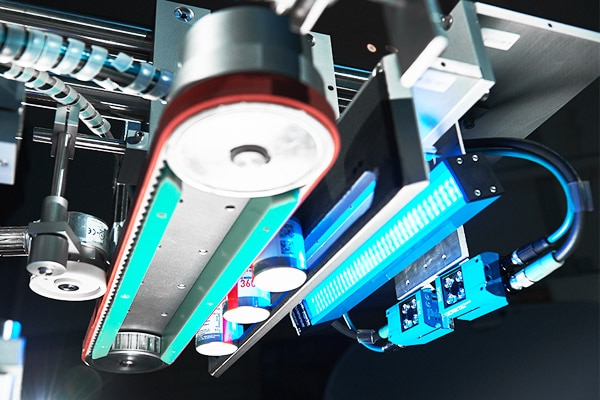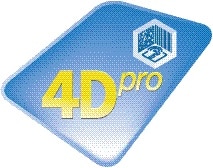Counterfeit pharmaceuticals cause major financial losses, can pose health risks, and undermine patients trust. In light of this, the pharmaceuticals industry has committed itself to implementing the EU directive 2011/62/EU by 2018. The falsified medicines directive, as it is known, aims to guarantee traceability and transparency in the supply chain. The pharmaceuticals industry is therefore on the lookout for solutions that will ensure counterfeit protection for pharmaceutical products. The company i-mation GmbH, a manufacturer of industrial image processing systems based in Rottweil, Germany, can now offer them a solution that simplifies the read process for curved storage containers. The system is based on the strong performance of the Lector620 High Speed image-based code reader by SICK.

The pharmaceuticals industry uses Data Matrix codes for the unique identification and serialization of products and to guarantee their traceability and counterfeit protection. Data Matrix codes encrypt a pharmaceutical products part numbers, serial and batch numbers, quantity and weight data, and the expiry date in just a single code. Further benefits of Data Matrix codes stem from their small, space-saving symbology and their high capacity for data. Furthermore, they are very reliable during the printing and reading process, making them safe to read. Data Matrix codes are easy to attach and read if they are used on cartons, boxes, and angled packaging. For round packaging, like bottles, tubes, or vials, this is not the case, explains Ralf Sinnerbrink, the head of customer projects at i-mation: Depending on which way the product rotates, the code on curved containers is often impossible to identify.
Quality checks and reading codes on curved Containers
With the ID Module 360, i-mation has developed a simple and safe system for reading all conventional 1D and 2D codes - including Data Matrix codes - on curved containers. To achieve this, up to two image-based Lector620 High Speed code readers by SICK are integrated into the system and positioned above a conveyor belt. The code readers can be adjusted in accordance with the products individual diameter. Depending on the code or cell size of the Data Matrix code, you need just one image-based code reader for products with a diameter up to 50 mm and two readers for products up to 100 mm, explains Sinnerbrink. With the old system, existing products on the market had to be isolated so that the codes were not covered during the reading process. And the cameras had to be mechanically adjusted to the diameter of each product to make sure they generated sharp images. All of this is now redundant hanks to our ID Module 360. The new system is also significantly narrower - thanks to the Lector620 High Speed. Its compact design even allows it to be mounted in locations with very little space. At the infeed area for the tape, a WTB4-3 miniature photoelectric sensor by SICK registers the products so that the code can be clearly assigned to the product. This is the only way to guarantee accurate traceability during the wrapping process. During wrapping, the product is rotated by at least 360°, which enables the camera to achieve optimum alignment. The Lector620 High Speed quickly and reliably detects products that have been coded incorrectly or have no code, which makes it particularly well suited to high-speed applications. This helps to achieve high throughputs while also dealing with high quantities in product control at the same time. Signals easily identify products with the wrong code or no code so that they can be ejected from production.
The Lector62x: an all-rounder by SICK
The Lector62x image-based code Reader is an intelligent SICK 4Dpro sensor for automatic, stationary decoding of codes on mobile or stationary objects. The code reader is tailor-made to suit industry requirements and is also the ideal solution for the pharmaceuticals business. This is because it reads all conventional 1D codes (bar and stacked codes) and 2D codes (Data Matrix codes, QR codes), as well as plain text (OCR), which is often used for the serialization of pharmaceuticals. Packaging is marked with a unique combination of letters and/or numbers for this purpose. The Lector62x can detect codes at intervals of between 30 mm and 300 mm. As a result, it offers the flexibility needed to identify products of various sizes. With its built-in red and blue illumination, the Lector62x can also light up its reading field perfectly at any time, regardless of the contrast explains Patrick Braun, Product Manager at SICK. This means that it can still read codes of the poorest quality, continues Braun. Furthermore, the code reader provides ultimate process security and availability, and can also be operated without any specialist expertise thanks to the intelligent decoding algorithms that evaluate the quality of the code read result.
Well connected thanks to 4Dpro
 With its wide array of Connection options, the Lector62x can be seamlessly connected to new or existing systems - thanks to the uniform user interface, the plant is ready for use in just the blink of an eye: 4Dpro also allows the device to be integrated into countless industrial networks (Ethernet, PROFINET, PROFIBUS, and CAN). The Lector62x uses its host interface to send the read data to a higher-level computer for further processing.
With its wide array of Connection options, the Lector62x can be seamlessly connected to new or existing systems - thanks to the uniform user interface, the plant is ready for use in just the blink of an eye: 4Dpro also allows the device to be integrated into countless industrial networks (Ethernet, PROFINET, PROFIBUS, and CAN). The Lector62x uses its host interface to send the read data to a higher-level computer for further processing.
- Product information: Image-based code reader Lector62x
- Product portfolio: 2D vision, image-based code Readers

